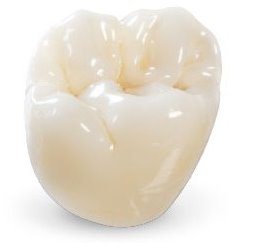Discoloured Teeth
Discoloured teeth are a common phenomenon. Depending on the criteria applied almost the entire population can be considered to have discoloured teeth. Some people have individual teeth which turn very dark and if these are the front teeth it can be quite obvious. A much more commonly heard complaint is about teeth generally being 'too dark' or 'too yellow'.
Teeth can become discoloured and stained for a number of reasons, and often the effect is temporary and can be attributed to food or drink, such as coffee, red wine or beetroot. Smoking also causes teeth staining, resulting in a nicotine smile that won’t see you dazzling anybody with your pearly whites. In addition, however, there are several diseases that can affect the tooth enamel and underlying dentin.
If a nerve dies within a tooth as a result of an injury or trauma, the tooth will darken as the nerve sheds material into the dentin. The tooth can be capped to cover the discolouration, or a bleaching solution can be utilised to whiten it. A number of other conditions can contribute to wider tooth discolouration, such as certain antibiotics and chemotherapy.
If you have discoloured teeth that are yellowed or grey, don’t despair, there are many options for solving this problem.
1. Teeth whitening or Bleaching.
These treatments usually work best on teeth that have discoloured over time with extrinsic stains such as smoking, coffee, tea, and staining foods over time. There are a number of tooth whitening products available both in stores and on the Internet. Additionally many beauty salons are illegally offering this service. They are all usually far cheaper. However the dangers of looking for the cheapest solution are considerable.
Tooth whitening solutions are basically bleach and great care is needed over the strength of the solution used and the time it is in contact with the tooth surface. Whitening bleach in inexperienced hands can easily damage the tooth enamel as well as the protecting gums and make the situation worse not better.
You are far better advised to have your teeth professionally whitened by an experienced cosmetic dentist.


2. Porcelain Veneers
For teeth that have been discoloured by Intrinsic stains such as tetracycline or antibiotic use, fluorosis or developmental abnormalities formed from childhood, these are more resistant to traditional tooth whitening methods. Veneers may be placed over the teeth to cover the stained teeth.
Dental Veneers are an ideal way of whitening discoloured or yellow teeth. They are think porcelain shells that fit over the front surface of the tooth. They can also help close unwanted gaps between teeth and to some extent help correct the appearance of crooked teeth.
However, veneers are suitable for the front teeth and are not for the rear 'chewing' teeth. Neither are they suitable for anyone with bruxism.
3. Ceramic Crowns – Metal Free Crowns
Crowns are the ultimate solution for very heavily stained or eroded teeth that may have other defects as well. Zirconium crowns are however now the preferred choice for cosmetic dentistry work.
Zirconium has the same translucency as normal teeth giving a completely natural look to the new crowns and so provides a superior cosmetic / aesthetic result.
Because zirconium crowns are metal free there can be no problem with the appearance of a fine dark line of metal at the base of the crown/bridge that can sometimes occur with porcelain fused-to-metal crowns should gum recession occur.
Discoloured teeth is a common complaint affecting many people and may vary in severity depending on the cause, the condition of the teeth, age, wear & tear and simple genetics! to find out more about your options, please contact our treatment coordinator , Yvonne on 01772 - 726932 to discuss your options

